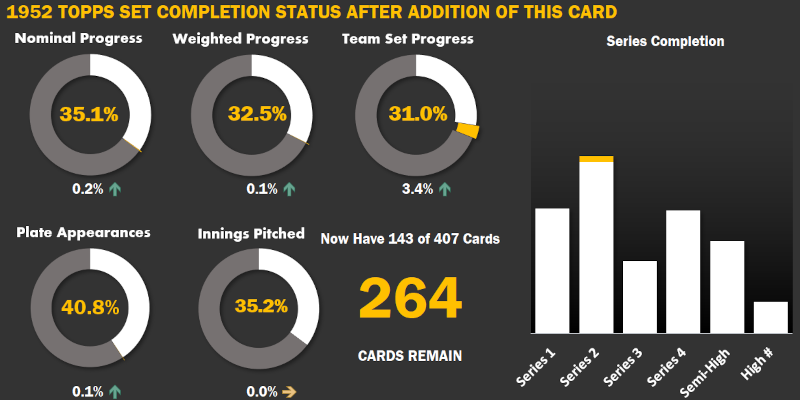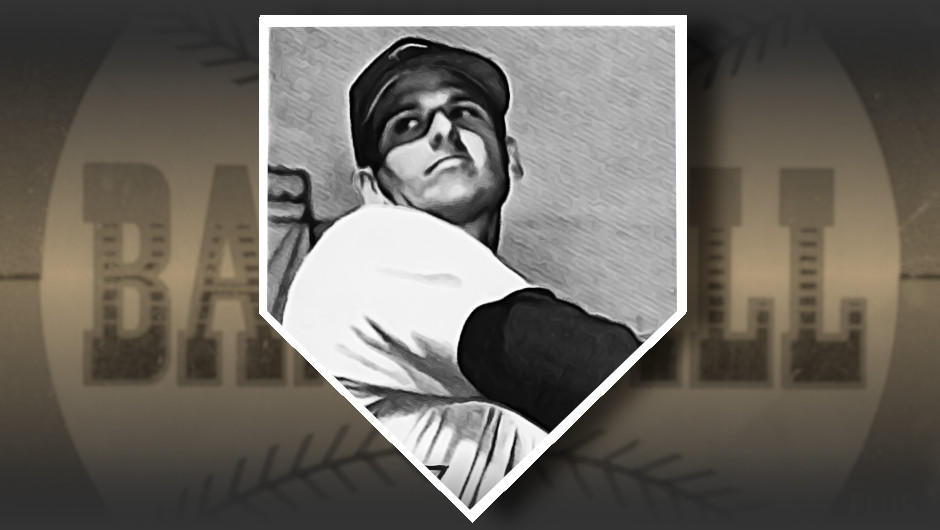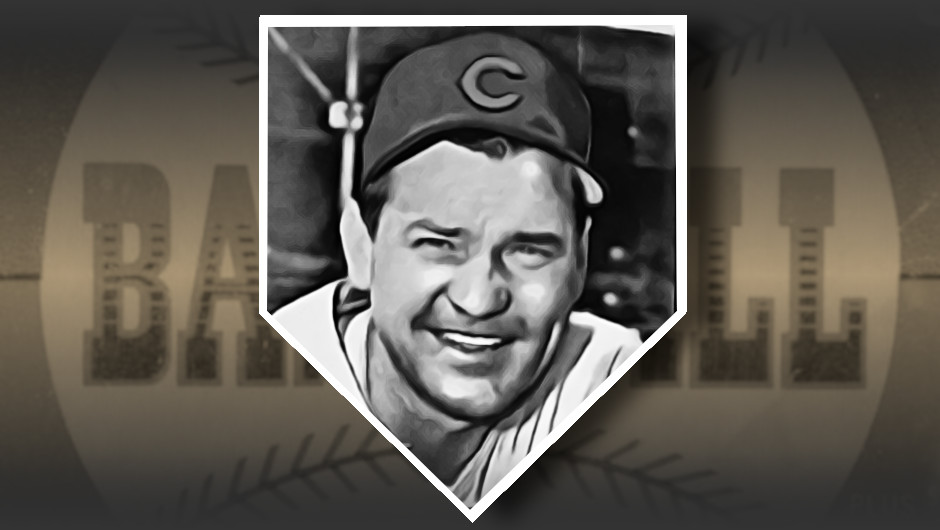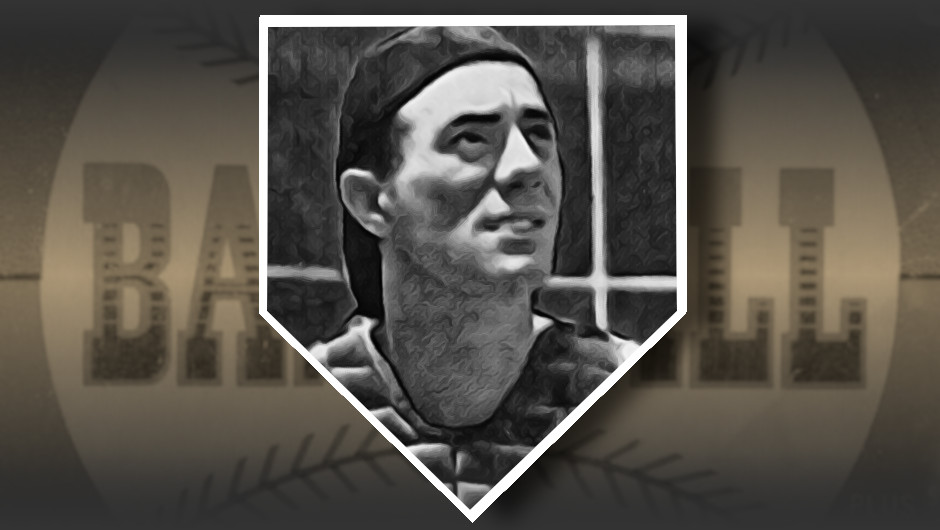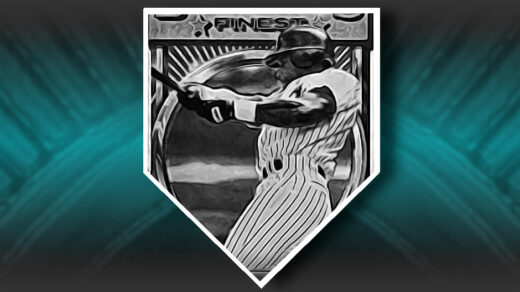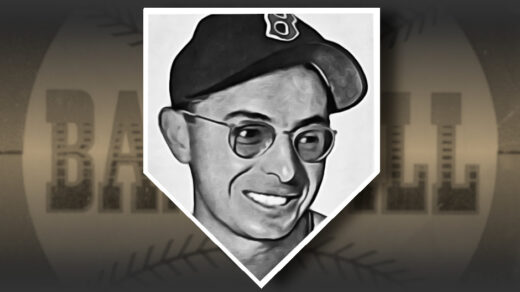Spending every moment of a game either at or behind home plate, it stands to reason that catchers should have the greatest eye for the strike zone. They spend their days directing pitchers towards the edges of umpires’ blind spots and have an intimate knowledge of how each man in black tends to call balls and strikes.
Red Sox backstop Gus Niarhos certainly had an eye for the strike zone. His 6.5% strikeout rate was much better than average. He accumulated almost as many walks as he did hits. He has the third highest walk ratio among players appearing in the 1952 Topps set and would have easily grabbed the top position if not for the presence of Ferris Fain and Ed Yost, two of the most walked players of all time.
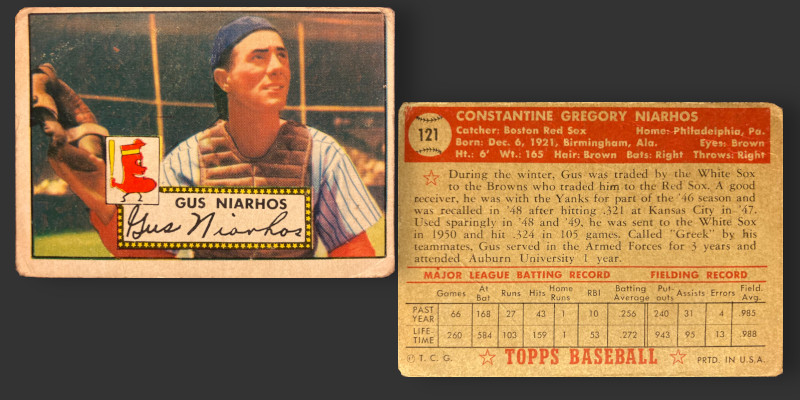
This is a good photo on Niarhos’ 1952 Topps card, though sharp-eyed collectors may notice that the Boston backstop is wearing a New York Yankees uniform. He had played sporadically with New York through 1950 before being claimed off waivers by the White Sox midway through the year. Chicago traded him to the Browns in 1951, though it is doubtful he ever set foot in St. Louis as he was traded to Boston less than 24 hours later. He is listed on the back as weighing 165 pounds, a low weight for a 6′ catcher. Teams were reluctant to play him on an everyday basis, only once putting him into a half season’s worth of games. A fast runner whose knees hadn’t given out from overuse; many of these appearances came as a pinch runner. This practice combined with his elevated walk rate to produce the effect of scoring runs at almost twice the clip that he drove them in.
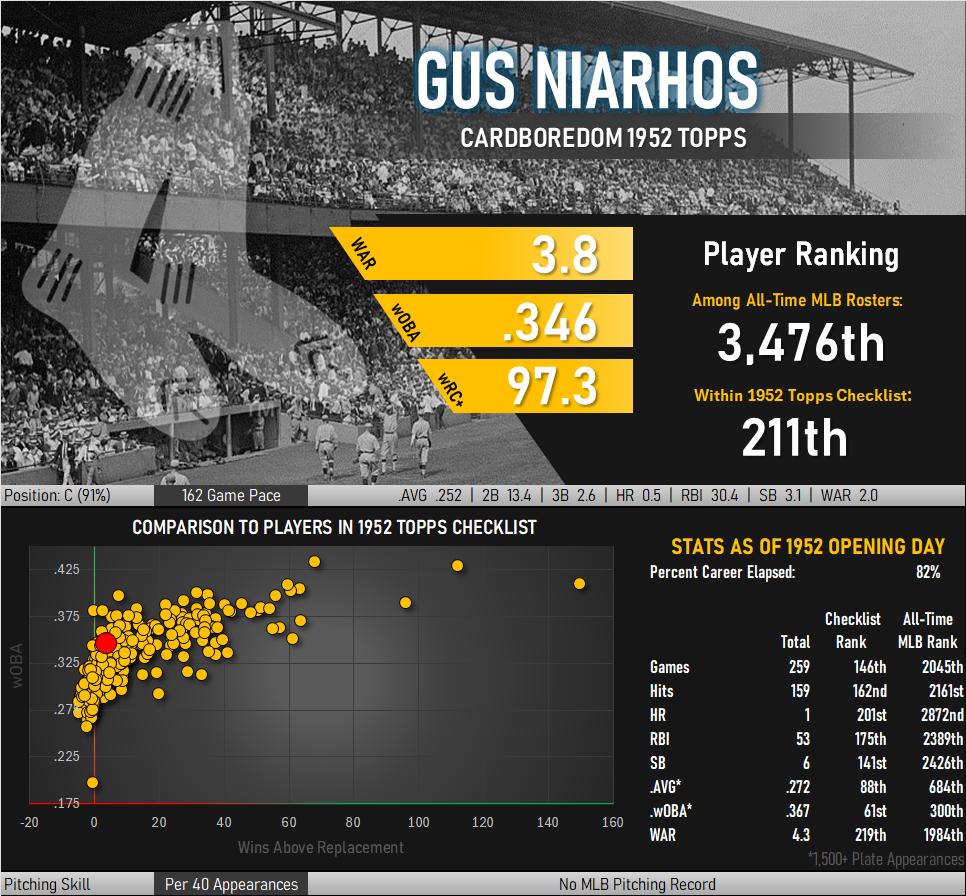
Niarhos’ Most Interesting Card is a ’20s Throwback
Strip cards were cheaply-made baseball cards that were most popular in the 1920s and required some assembly by collectors. Cards were purchased in thin, uncut rows (i.e. “strips”) that needed to be separated into individual pictures. Condition is rarely uniform given the hand-cut nature of the cards. They are largely forgotten due to low quality printing, unappealing design, and a confusing series of near-identical designs that seem to blend into each other across multiple seasons. They are known by catalog numbers rather than manufacturer with the names of many issuers lost to time.
Gus Niarhos, as far as I can tell, actually has his rookie card appearing in such a set. The R346 strip set was issued in 1948 and portrays the catcher as card #25. The cards are printed in monochrome shades of blue ink and give off the appearance of a high school yearbook. This particular set came with a thin blue rectangle around each card and it remains unresolved exactly where the card should be cut in relation to it. The one pictured below is cut along the interior of the border.
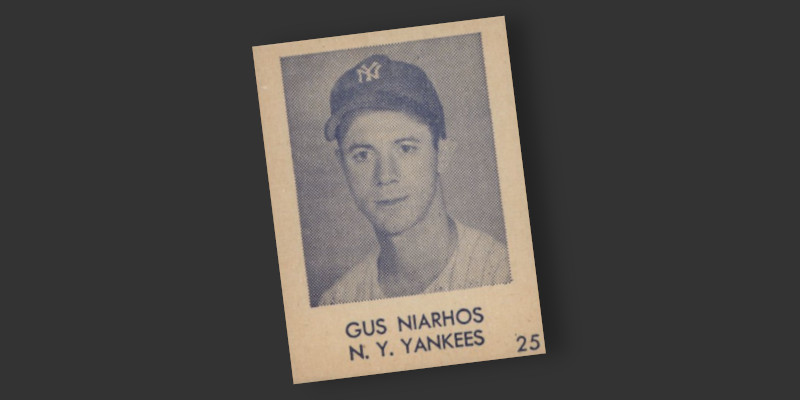
There are perhaps a dozen or so cards of Niarhos issued during his career. While his ’52 Topps is in the running for best looking, his this one may be the most challenging to track down.
